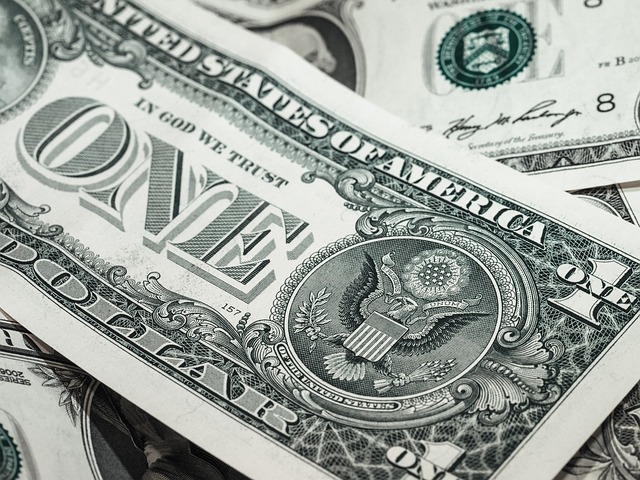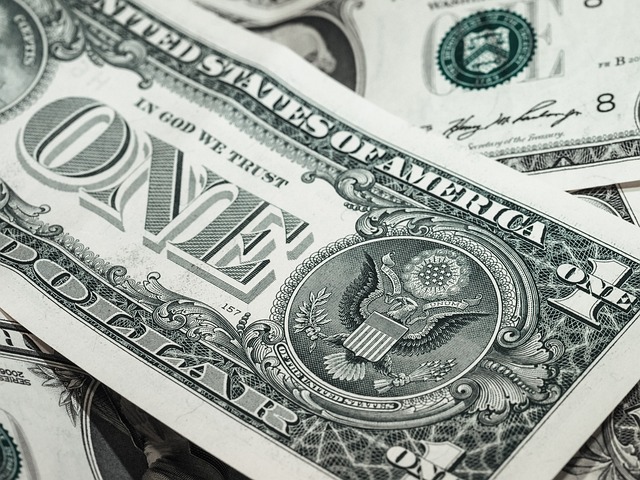Does Binance US Have Paper Trading in 2025? Practical Guide
Author: Jameson Richman Expert
Published On: 2025-11-01
Prepared by Jameson Richman and our team of experts with over a decade of experience in cryptocurrency and digital asset analysis. Learn more about us.
Does Binance US have paper trading is a question many novice and experienced crypto traders ask in 2025 as they look to test strategies without risking capital. This article answers that question directly, explains what paper trading means, compares Binance.US to platforms that do offer simulated trading, gives step-by-step alternatives, and shares actionable tips to practice and validate strategies safely. You'll also find trusted resources, platform links, and suggested workflows to simulate trades like a pro.

Quick answer: Does Binance US have paper trading?
Short answer: No — Binance.US does not currently offer a built-in, official paper trading (simulated trading) account as of 2025. Binance.US focuses on live spot, fiat on-ramps, staking products, and derivatives on partner platforms, but it lacks a dedicated simulated trading mode inside its consumer app or web dashboard. That said, you can emulate paper trading with several reliable workarounds and third-party tools covered below.
What is paper trading and why it matters
Paper trading (also called simulated trading or demo trading) lets traders place mock trades using live or historical market data without committing real funds. Benefits include:
- Strategy testing: Validate indicators and rules before risking capital.
- Emotional conditioning: Practice execution and discipline without fear of loss.
- Order mechanics: Learn market, limit, stop, and OCO orders in a risk-free environment.
- Performance tracking: Compare rule-based strategies and compute metrics like win rate, expectancy, and drawdown.
For educational context and definitions, Investopedia has a clear primer on paper trading: Investopedia — Paper Trading.
Why Binance.US might not offer paper trading
There are several reasons big regulated exchanges like Binance.US may avoid integrated paper trading:
- Regulatory focus: Binance.US operates under U.S. regulatory scrutiny and prioritizes compliance and custody of real assets.
- Operational complexity: Maintaining synchronized simulated books with live markets requires engineering resources and can introduce risk if not isolated properly.
- Business model: Exchanges monetize real trading volume. Offering robust simulated trading is less directly revenue-generating.
That said, product roadmaps evolve. Always check Binance.US support pages for new features: Binance.US Official.

How to simulate paper trading if Binance.US lacks it
If you want to test strategies while still using Binance.US for your live account, these are the best practical options:
1) Use TradingView’s paper trading with real Binance.US-like data
TradingView offers a robust paper trading engine where you can practice order types and strategy scripts (Pine Script). While TradingView won’t execute trades on your Binance.US account unless integrated, the chart data and order simulation are excellent for strategy validation.
For a deep dive into TradingView and app-based trading, see this article: Can you trade from TradingView app — in-depth analysis.
2) Use Binance Testnet for derivatives (where available)
Binance runs testnets (like the Binance Futures Testnet) for its derivatives platform, which are separate from Binance.US. If you need to practice futures strategies, the testnet is a great option — but it’s not the same as the Binance.US environment and may have different instruments and leverage.
3) Use third-party simulated trading platforms
Several platforms provide crypto paper trading with live feeds:
- Crypto-specific simulators: Platforms like Bitfinex Paper Trading and demo features on BitMEX testnet (for derivatives) are useful.
- Broker simulators and backtesting tools: Tools such as QuantConnect and Backtrader allow you to backtest and paper trade with historical data, which helps validate algorithms.
For live data and price tools, check this resource on real-time Bitcoin data and market dynamics: BTC Live Price Now — Ultimate Guide.
4) Manual paper trading (spreadsheet + simulated order log)
Manual paper trading is low-tech but powerful. Use a spreadsheet to log entries/exits, position size, commissions, and update with live quotes (manually or via CSV). This method forces mindful execution and helps you quantify slippage and emotional responses.
Platforms that do offer paper trading (alternatives to Binance.US)
If a built-in paper trading experience is critical, consider these platforms. Each entry includes a sign-up link if you want to test live later (affiliate/referral links provided by the author):
- TradingView (paper trading): Excellent charting and simulated order placement. (See TradingView site for details.)
- Bitget: Offers demo accounts for both spot and derivatives. Sign up: Register at Bitget.
- MEXC: Demo/practice modes and easy onboarding. Sign up: Register at MEXC.
- Bybit: Offers a testnet demo and paper trading features. Sign up: Register at Bybit.
- Binance (global testnets/info): For certain products, Binance maintains testnets. You can also create an informational account via: Binance Info Register.
Note: If you decide to move to a different exchange after testing, always evaluate fees, liquidity, and regulatory status.
Practical step-by-step: Paper trading workflow without Binance.US demo
Follow this workflow to simulate trading while using Binance.US as your primary live exchange.
- Choose your simulation tool: TradingView paper trading, Bitget/MEXC demo, or a backtesting platform like QuantConnect.
- Mirror Binance.US tickers: Use BTC/USD or ETH/USD pairs that match Binance.US symbols and timeframes. Many tools let you select data feeds; pick ones that closely match Binance liquidity.
- Define rules: Write clear entry, exit, stop loss, take profit, position sizing, and trade management rules. Example: “Enter long BTC when 20 EMA crosses above 50 EMA on 1-hour; stop-loss at 1.5% below entry; position size = 2% of equity.”
- Execute simulated trades: Place mock orders using the simulator and log every trade (why you entered, emotional notes, outcome).
- Track performance metrics: Compute win rate, average win/loss, expectancy, max drawdown, and Sharpe ratio. A spreadsheet or trading journal app helps here.
- Refine and retest: Tweak parameters, retest on new market regimes, and run walk-forward tests (out-of-sample validation).
- Paper-to-live transition: Start small on your Binance.US live account. Use identical rules, note slippage, and gradually scale if results are consistent.

Example: Testing a simple EMA crossover strategy with paper trading
Below is a concise example you can run in TradingView’s paper trading or in a spreadsheet backtest.
- Instrument: BTC/USD (1-hour chart)
- Rules:
- Entry: 20 EMA crosses above 50 EMA on close
- Exit: 20 EMA crosses below 50 EMA on close OR take profit at 4% gain
- Stop loss: 2% below entry
- Position size: 2% of equity per trade
- Commission: 0.1% per trade (adjust to your exchange fees)
- Example trade: Equity = $10,000 → position size = $200 → entry BTC price = $50,000 → stop loss = $49,000 (2% below) → take profit = $52,000 (4% above).
Log the trade in your journal. If the simulated trade closes with a 4% gain, subtract fees and compute the net gain. Repeat across dozens or hundreds of trades and measure expectancy documented in your spreadsheet.
Dealing with order types and slippage in simulation
One of the most important differences between simulated trading and live trading is slippage and partial fills. Simulators often assume instant fills at requested prices. To make simulations realistic:
- Model slippage: Add a fixed or percentage slippage per trade (e.g., 0.05%–0.5% depending on liquidity and order type).
- Include commissions and funding: Add maker/taker fees and, if using margin/futures, funding rate costs.
- Use limit vs market assumptions: Simulate limit orders with partial fills probability, and assume market orders fill at next best price with slippage.
Using API and paper trading bots
Advanced traders can build paper-trading bots that simulate orders via APIs. Two practical approaches:
- Paper engine + live data feed: Use a data feed (TradingView webhook, exchange websocket) and run your strategy engine locally. The engine logs simulated orders to a database without calling live trading endpoints.
- Exchange testnet API: Some exchanges offer testnet endpoints (Bybit, Bitget testnet). Use these to test execution and APIs in an environment that mimics live order matching.
For guidance on bot-enabled workflows and price calculators that support backtesting, see: Choosing the Best Crypto Price Prediction Calculator.

Regulatory, tax, and security considerations
Even during the testing phase, be aware of these considerations:
- Regulatory constraints: Binance.US operates under U.S. regulations. If you move to global Binance or other exchanges for testnets, ensure you comply with your local laws.
- Tax treatment: Gains on simulated accounts are not taxable, but when you transition to live trading you must track every real trade for tax reporting. Keep a separate ledger for paper and live trades.
- Security: Never expose your production API keys to demo environments. Use restricted or read-only keys if needed and rotate them frequently.
For practical safety and security guidance when choosing a trading platform, this review on Binance safety is helpful: Is Binance Safe for Trading — Practical In‑Depth Guide.
When to move from paper trading to live trading
Moving from simulation to live trading should be a disciplined decision. Consider these thresholds:
- Statistical significance: You should have at least 50–100 trades (varies by strategy) across different market regimes.
- Positive expectancy: Strategy expectancy > 0, acceptable max drawdown, and acceptable Sharpe ratio over the sample period.
- Execution proof: You’ve modeled slippage, commissions, and partial fills, and the strategy remains profitable.
- Emotional readiness: Start with a small live allocation (e.g., 1–5% of capital) to test real-world emotional responses.
Other resources and continuing education
To expand your understanding of market dynamics and altcoin prospects in 2025, read this altcoin guide: Most Promising Altcoins in 2025 — Comprehensive Guide. For market data hygiene and live price feeds, refer to the BTC live price guide earlier linked.
Additionally, reputable educational sites include:
- U.S. Securities and Exchange Commission — guidance for investors.
- Investor.gov — investor education from the SEC.
- Simulated trading — Wikipedia — general background on simulation methods.

Pros and cons: Paper trading vs live trading
Understanding strengths and limitations helps you set realistic expectations.
Pros
- No capital risk while testing.
- Fast iteration of strategies and parameter tuning.
- Ability to paper trade multiple instruments concurrently.
Cons
- Simulators may underestimate slippage and liquidity effects.
- Emotional differences — simulated losses feel less impactful than real losses.
- Overfitting risk when optimizing to historical data without out-of-sample testing.
Checklist: Practical setup to paper trade for Binance.US strategies
- Choose a simulator: TradingView, Bitget demo, or backtesting platform.
- Match symbols and timeframes to Binance.US listings.
- Document every trade and rationale in a journal.
- Model slippage and transaction costs.
- Perform out-of-sample and walk-forward testing.
- Start small when moving to live trading and scale only after consistent performance.
Where to sign up and try other exchanges (links)
If you want to explore exchanges with demo or testnets or diversify where you trade, here are handy links:
- Binance (info/register): Open a Binance Info account
- MEXC (register): Register at MEXC
- Bitget (referral/register): Register at Bitget
- Bybit (invite): Register at Bybit

Final recommendations and next steps
To summarize:
- Does Binance US have paper trading? Not natively as of 2025.
- If you need paper trading: Use TradingView, exchange testnets (Bitget/Bybit), or third-party simulators.
- Model real-world conditions: Include slippage, commissions, and partial fills to avoid unrealistic expectations.
- Transition carefully: Use small allocations, track performance, and scale up only when you have statistical confidence.
For continued reading about platform safety, trading integration, price data, and altcoin research, explore these related guides:
- Is Binance Safe for Trading — Practical In‑Depth Guide
- Can you trade from TradingView app — In‑depth Analysis
- BTC Live Price Now — Ultimate Guide
- Promising Altcoins in 2025 — Comprehensive Guide
- Choosing the Best Crypto Price Prediction Calculator
FAQ
1. Does Binance.US plan to add paper trading?
Product roadmaps change. Check Binance.US announcements and support for new features. Until then, use the workarounds described above.
2. Is paper trading sufficient to prove a strategy?
Paper trading is necessary but not sufficient. Combine paper trading with out-of-sample tests, realistic slippage modeling, and a cautious live rollout to validate robustness.
3. Are demo accounts identical to live trading?
No. Demo accounts often assume instant fills and zero slippage. Treat results as directional; expect performance degradation due to execution realities in live markets.
4. What if I need derivatives testing?
Use exchange testnets (Bybit, Bitget) for futures demo testing. These testnets replicate leverage and order book behavior better than basic simulators.
If you'd like, I can create a printable paper-trading spreadsheet template, a simple Pine Script strategy for TradingView, or a checklist for transitioning to live trading on Binance.US. Which would you prefer?